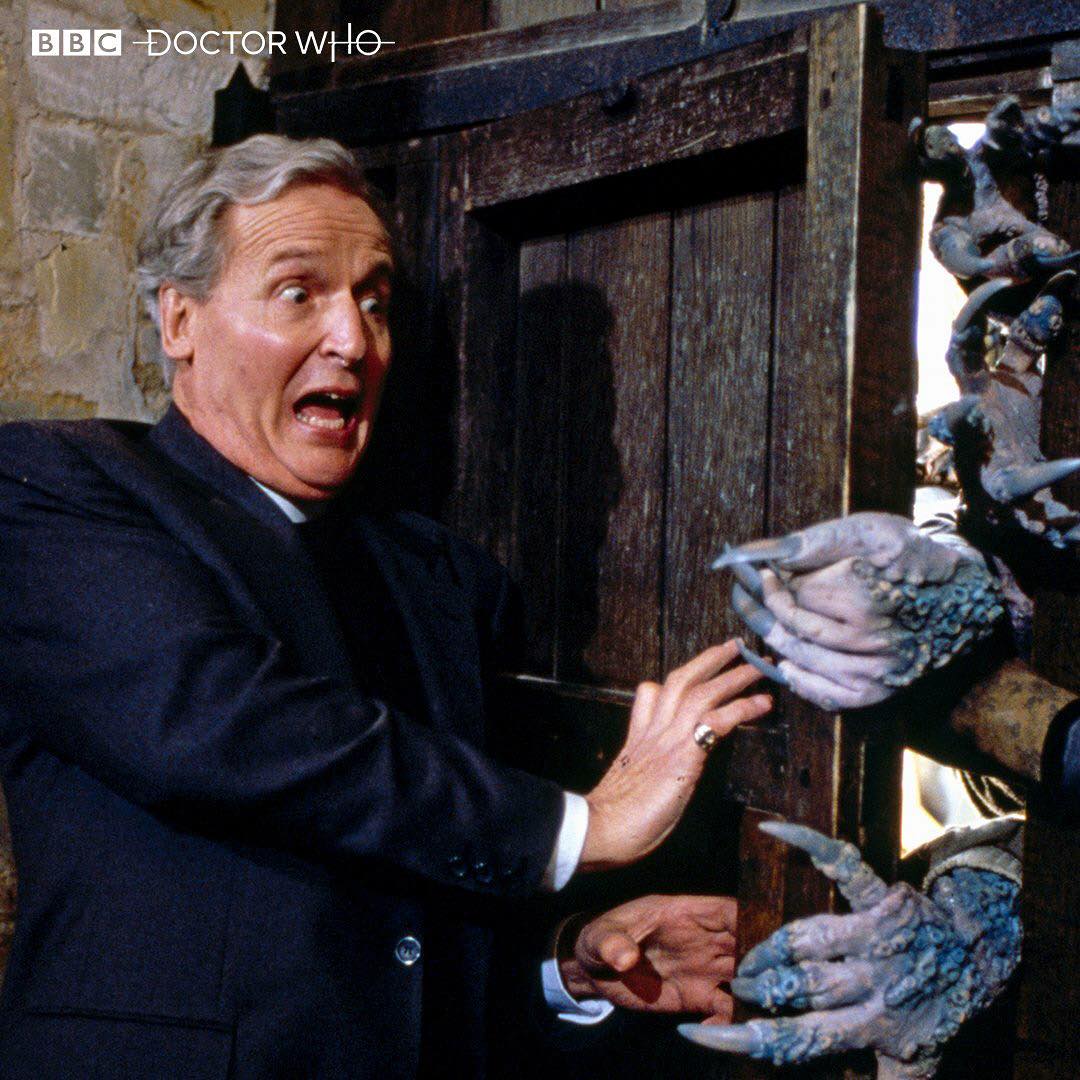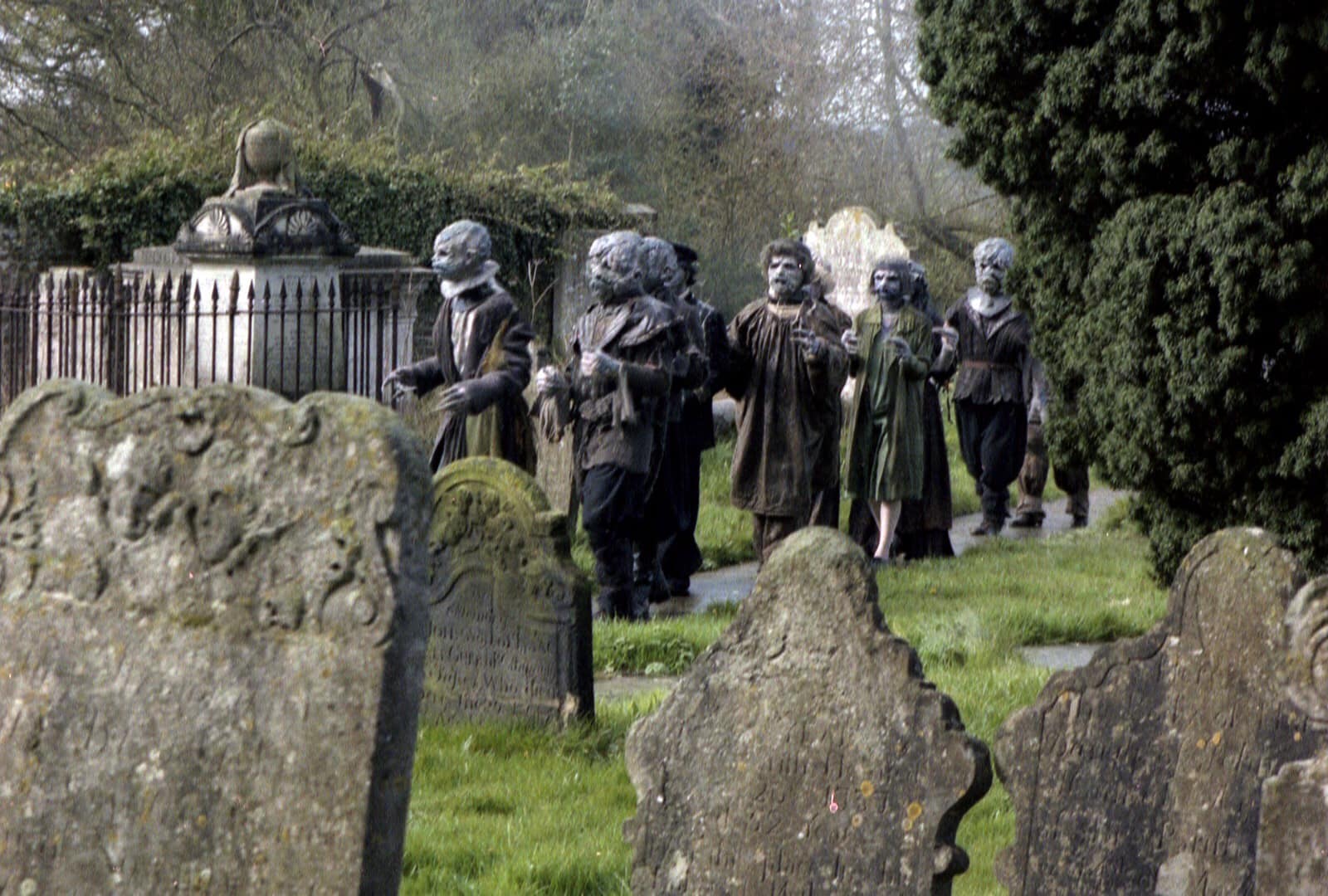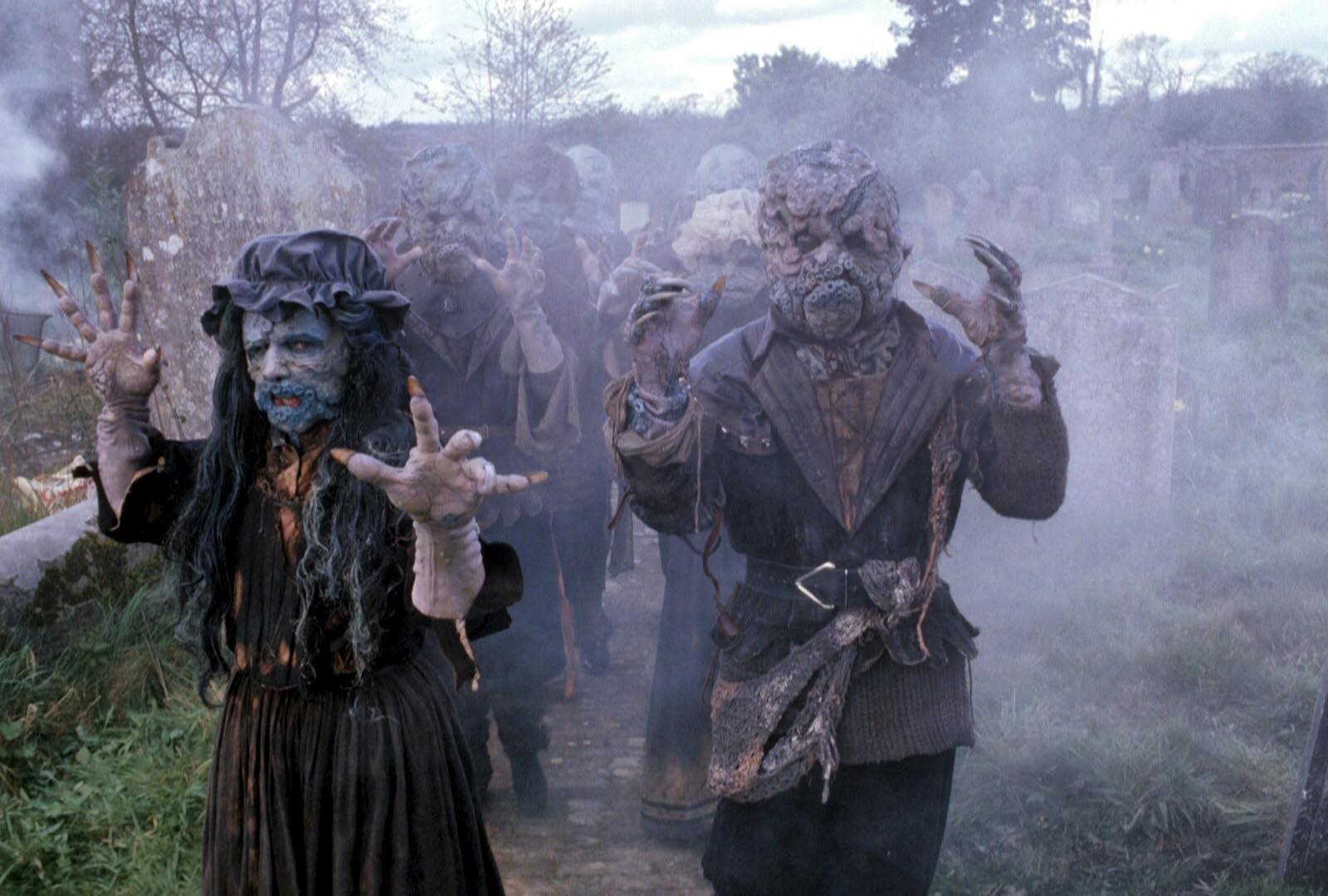Review by Chlo Hickson
‘The Curse of Fenric’ is one of the best stories in all of Classic Who and is one of McCoy’s best stories on TV. Its well paced and has some dark and mature themes. It illustrates the full potential McCoy’s darker Doctor had to offer, and Sophie’s journey as Ace’s is unique in the show’s original run. Few companions ever had this much character development. The McCoy era was over before people realised what they had, its only now, with hindsight I feel that they understand just what they could’ve had. This is a Doctor Who story unafraid to approach the subjects of familial relationships, war, religion and belief. This is a show that imagines it can be about anything and everything because it has an intelligent audience. It feels like genuine progress for the show, it explored a bunch of ideas that wouldn’t come up again until the revival and it has loads of good ideas. Its a thrilling adventure, and a great example of this era of Doctor Who.
One of the strongest things about ‘The Curse of Fenric’ is how it is set up. The first two episodes are essentially just establishing the training camp, the English soldiers, the Russian soldiers, the other characters and the Viking curse. It can be considered a bit slow for some, but it’s not padding. It has relevance to the story and is actually very interesting. Without these two establishing stories, the narrative wouldn’t be as strong.
Once we get to the action packed last two episodes, things take a dramatic turn as vampires rise from the sea and attack people. The imagery of the vampires attacking the church and graveyard is very well done. The whole thing of faith works very well within the story, but better than in ‘The God Complex’ which if I’m being honest is a clear rip off of this episode.
And then finally the conclusion of the Doctor and Fenric’s chess game. I think a lot of viewers might not fully understand the implication of the Doctor’s final move. The point is the pawns stop playing. That is the Doctor’s winning ploy, reflected in the events going on around them. The Haemovores stop playing. Ace, Fenric’s “wolf”, manipulated into position, stops playing. The military soldiers around them stop playing, they stop being pawns and choose their own destiny. This story is about free will. The pawns must stop being pawns.
If you notice this is done without the Doctor making a speech about free will in the final scene. There actually is sophisticated storytelling and writing in this episode.
 Then there’s the heart of it all: the script. This is a story with many threads and layers. Its a story about war and faith that explores the nature of evil and the lengths someone must go to fight it. On top of that there is the obvious horror aspect in the form of the Haemovores. Ian Briggs also manages to tie together stories such as ‘Dragonfire’ and ‘Silver Nemesis’ to explore the background and character of Ace. On top of that this story is also a chess game for the Doctor and his ancient enemy Fenric in which all the other characters are pawns. This is a story where someone needs to watch for themselves to get everything that is going on, making this not only an action story but one of the show’s most intellectual as well.
Then there’s the heart of it all: the script. This is a story with many threads and layers. Its a story about war and faith that explores the nature of evil and the lengths someone must go to fight it. On top of that there is the obvious horror aspect in the form of the Haemovores. Ian Briggs also manages to tie together stories such as ‘Dragonfire’ and ‘Silver Nemesis’ to explore the background and character of Ace. On top of that this story is also a chess game for the Doctor and his ancient enemy Fenric in which all the other characters are pawns. This is a story where someone needs to watch for themselves to get everything that is going on, making this not only an action story but one of the show’s most intellectual as well.
As the show entered its final years, Andrew Cartmel brought a new bold and defining vision to the series, offering a fresh approach to the Doctor. He suggested that his outward persona was an act to hide a more calculating and manipulating interior.
I’d say this is Sylvester McCoy at his best, gone is the fun side of his personality, in it’s place he becomes darker and far more manipulative than ever before.
This episode is another chance to show this side of him and its done brilliantly. The scene where he breaks Ace’s faith in him is brutal and is performed extremely well by McCoy and Aldred.
I think It’s frightening to see the Doctor behave like this, but if I’m being honest scenes like this are why he’s my favourite Doctor. Sylvester McCoy can capture such darkness, but embody such a warmth too.
Ace gets some amazing development throughout this story. She finally let’s go of her fear and makes some good steps towards forgiving her mum. Ace’s character growth in this story is one of the reasons why she’s my favourite companion.
She has to battle feelings for her mum, while also dealing with conflicting messages from the Doctor about her own past and her value to him. She gets put through the ringer and it brings out the best in her character.
This story also marks one of the biggest character development moments for Ace. At the start of the story, she is a girl, acting sassy towards everyone and being playful. When it becomes apparent that she and her past are part of the narrative, her character takes a turn and she becomes hardened and worried. At the end, after Fenric has been defeated, she becomes a woman in her own right. Luckily, in the next story, her character is the same, so the development pays off.
This airing after ‘Ghost Light’ was a sneaky way of making Ace’s journey in ‘The Curse of Fenric’ more surprising. Fans back then, and still today, don’t expect major developments for the companions twice in a row. While this wasn’t the order they were produced, having Ace face a childhood fear is a great way to lead into a story confronting her biggest fear – her mum. This isn’t the first time companions have been thrown through a loop with time travel, but it’s definitely been more impactful on the revival. It helps that Sophie Aldred was given a wide range of emotions to go through, and she succeeds in bringing the journey to life.
The Haemovores are genuinely really creepy looking and are a great secondary antagonist. The fact that Fenric doesn’t appear until the end of part 3 works extremely well. He’s built up as this unseen malevolent presence throughout and when he finally arrives you can see how powerful and dangerous he is.
Fenric is chilling and is played very well by both actors. Fenric in Dr. Judson is threatening, but him in Captain Sorin is chilling. Tomek Berk is very brave and charismatic as Sorin but equally as sinister and cruel when he gets possessed by Fenric.
 What a fantastic villain he is, and what a Machiavellian figure! We discover that he has been manipulating events in the Doctor’s life for the past two series with the revelation that Ace is one of his wolves. Long range, epic storytelling has arrived in Doctor Who and will continue on in the revival!
What a fantastic villain he is, and what a Machiavellian figure! We discover that he has been manipulating events in the Doctor’s life for the past two series with the revelation that Ace is one of his wolves. Long range, epic storytelling has arrived in Doctor Who and will continue on in the revival!
The scenes with the priest are quite dark. The scene where the sisters tell him its not the German bombs he’s afraid of but the British bombs on German cities is an amazing scene and is a great commentary on the horrors of war. There’s also a nice little scene with the soldiers realising that they are comrades. It ties in nicely into the anti-war themes pretty well and is a good way of showing how although the soldiers are from different sides they’re still just people.
Something I’ve recently come to realise, that I should’ve noticed earlier, is that Ann Reid who plays nurse crane is also the Plasmavore in New-Who. How I didn’t know that is a mystery to me.
‘The Curse of Fenric’ is Doctor Who at it’s finest or close to it. It has strong performances, good production values and a strong script. There’s ambitious storytelling, densely packed with themes, topics of discussion and real world subjects as opposed to pure escapism. Layers of meaning and metaphors. The stakes are high, Sylvester and Sophie are superb and special mention goes to Tomek Bork for his sinister performance. This is an incredible story that’s an absolute must see for 7th Doctor fans. Ian Briggs delivers a twisted tale of horror in combination with Norse mythology and with the help of Nicholas Mallett’s expert direction all shot on location and Mark Ayres’ fantastic score for the show, you could say this is one of the biggest influences on New-Who.

